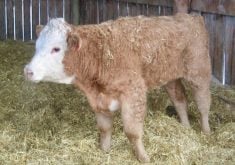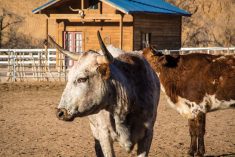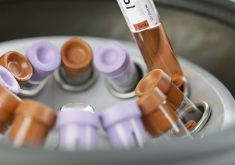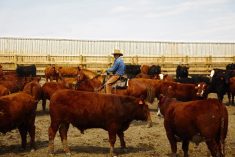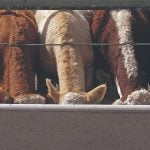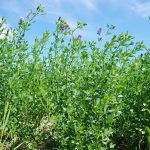University of Guelph research could lead to revolutionary new approaches to preventing pneumonia in beef cattle while reducing the use of antibiotics.
Dr. Jeff Caswell, a professor in the pathobiology department at the Ontario Veterinary College, says the traditional thinking has been that risk factors such as weaning, transportation, inclement weather, castration and viral infections lead to immunosuppression, which leads to pneumonia and other bovine respiratory diseases (BRD).
However, he and fellow researchers now believe that inflammation in the respiratory tract could be a big contributor and controlling that inflammation might significantly reduce cases of bacterial pneumonia.
Read Also

Canadian Beef Check-Off Agency reports on investments and activities
The check-off agency’s work behind the scenes is what ensures cattle check-off dollars are invested wisely, accounted for transparently and deliver measurable value back to producers and importers.
In the experiment, a group of male auction calves considered to be at high risk for the disease were given an aerosol that contained killed bacteria to stimulate their immune response. A second control group was given a saline replacement. The researchers found that the calves treated with the killed bacteria developed more severe disease, instead of having more resilience as expected.
In fact, the first group lost 4.3 kilograms while the control group gained 4.3 kilograms, on average, in the first 28 days. Six of the 29 calves that received the killed bacteria died of mycoplasma bovis pneumonia while only one of the 29 control group calves died.
This discovery — along with other research results — has altered researchers’ thinking about preventing the disease, shifting the focus from promoting an immune response to dampening inflammatory responses.
“We’ve always worried that it wouldn’t make sense that, in evolutionary terms, during acute stress, your immune response would be suppressed,” he says. “That would be counterintuitive.”
He says the latest research indicates some types of immune responses are suppressed by stress, but others are increased.
It’s a big shift. BRD is the most common disease in North American feedlot cattle. It costs the Canadian industry an estimated $75 million annually in treatment and production losses.
“Ideally all calves would be pre-conditioned before they get to the feedlot — being weaned four to six weeks in advance, introduced to grain-based diets and they’d be pre-vaccinated,” he says, adding this would significantly reduce the incidence of respiratory disease.
However, the economics don’t work out, given the price that the calves fetch and the expense of doing all the pre-conditioning, he says.
“For calves that aren’t pre-conditioned, they’re likely treated with antibiotics, especially if they go through auction barns and are sourced from multiple places,” Caswell says, adding that much of the risk of disease depends on how the calves are managed.
The overuse of antibiotics as an antimicrobial treatment has been flagged as dangerous, given their declining effectiveness against ever-evolving bacteria, viruses and fungi.
The World Health Organization (WHO) conducted a scientific review that said, where there were restrictions on antibiotic use, resistant bacteria was reduced by up to 39 per cent in animals. This and other research led the WHO to recommend in 2017 that farmers and food producers cease using antibiotics as a growth promotant and preventative for disease.
The threat of antimicrobial resistance led the Canadian government in 2018 to make all medically important antimicrobials available to farmers by veterinary prescription only.
Moving ahead
While researchers understood the cause of inflammation in the experiment (the killed bacteria), there could be several other causes in a feedlot or barn situation.
“I’m curious about the cause of the inflammation, and how that inflammation leads to disease,” Caswell says. “The important point is that we’re looking at healthy calves that are not yet infected — it’s a lot like COVID in that if you have risk factors before you get infected, the chances of getting really sick are much greater.”
The idea is to catch the disease before it becomes full-blown, which is why they were conducting another experiment in the fall of 2021 to discover what type of inflammatory response is occurring in those at-risk calves. They’re also comparing this to inflammatory responses from viruses. In addition, they’re conducting stress research, comparing calves that are weaned via a nose-flap to those that are abruptly weaned.
They’re trying to tease out the causes of inflammation, whether it’s stress or viral infection, and what’s happening at a molecular level during the inflammatory response. The team is also investigating the role poor-quality barn air plays in causing inflammation in dairy calves.
Their work may lead to preventative medicines that reduce the incidence of BRD, which will reduce the costs of treatment, production losses and the spread of antimicrobial resistance.
– Lois Harris is an experienced Ontario freelance writer and editor working in the agriculture and food industry.



